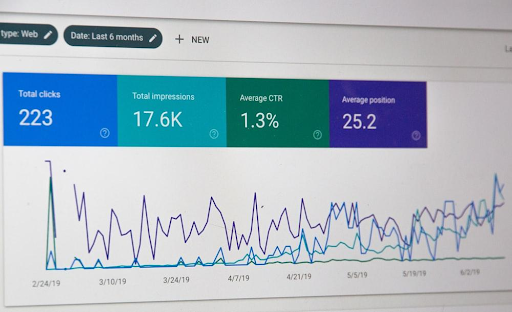Starting a business might seem easy, but maintaining steady growth is another challenge. Statistics show that over 70% of startups fail within the first two years of takeoff. Why? Most business owners don’t understand how to define growth and measure the right metrics.
After investing in a high-end SaaS web design and developing a top-tier product, you must understand if your startup is moving in the right direction. You might focus on the wrong SaaS metrics and find yourself with major losses. Before you know it, you are out of business.
Fortunately, we are here to help with insights on tracking your business while ensuring growth. This article discusses the essential metrics you need to know to monitor each phase.
Recurring Revenue (RR)
It is imperative to have an average figure of what your business is generating. You can get this value by monitoring your SaaS platform’s monthly revenue. This lets you know if you are making profits or losses. After a while, you will understand the incoming annual revenue. Understanding this metric will help you gain stability and plan for important projects in the future.
Churn Rate
A business needs to gain and retain customers. While gaining new clients is good, serving the loyal ones who bring in constant profits is more profitable. This rate is a metric that measures the clients you have lost within a specific period. You can choose to evaluate monthly or quarterly rates, depending on your tracking objectives. However, the values are usually different for each business. Therefore, ensure you evaluate your industry and find out about your competitors and their rates. This measure is crucial since you must know if you are covering more clients in your business.
Cash Flow
The primary goal of business is to generate profits. Having a good profit margin translates into a constant cash flow. Thus, you need to track how the cash flows into the business account and if you can stay afloat. Cash flow is a vital metric that you need to monitor constantly. SaaS businesses can’t function optimally without adequate cash reserves.
You can invest in growing your business by developing new products and enhancing user experience if you have a good flow. There is no standard amount of cash you need to have. Businesses operate differently in their capacities. So, ensure you have enough to run the startup without challenges.
Average Revenue Per Account (ARPA)
Understanding cash flow is crucial, but do you know the average figures you generate per client? The ARPA is the profits coming into the business from one client. You can measure this value by dividing the profits you constantly get per month by the number of clients to get the ARPA per month. You can compute this value yearly using the income recurring per year.
If you understand the returns from each customer, you can grow your profits immensely. It also offers opportunities to improve services and gain more customers. Ultimately, you will have a higher ARPA, which means higher profitability.
Number of Customers
Startups succeed because of clients who purchase the products or services. Understanding the number of clients you have is critical in growing your startup. You might think you have a large following, only to realize your brand is not popular.
Fortunately, most digital platforms allow you to know the clients using your product. So, you must monitor this metric regularly to see if the numbers are growing. Track the users to understand your business better. This will open avenues for introducing features to increase profits. Furthermore, you can expand this metric to cover the active users monthly. This knowledge allows the company to introduce promotions and special prices to entice inactive users into procuring the service again.

Source: Unsplash
Lead Velocity
You might launch a good product in the market, but it might fail because of a poor approach to lead generation. Having good leads in the sales funnel will bring more returns to your business. Thus, you need to track the lead velocity monthly to know if your business is moving in the right direction.
The lead velocity value is vital in uncovering information about your startup growth. You can predict revenue growth by knowing the number of qualified leads. This parameter allows you to comprehend your SaaS sales funnel and introduce strategies to convert the leads into loyal customers.
Activation Rate
The activation rate measures the users who proceed to complete certain actions after visiting your digital startup. Some will sign up and not do anything, and others will register and purchase the service.
Thus, this aspect measures the clients who complete actions divided by those who sign up. These indicators vary for each startup. For instance, you might track the rate of users who onboard fully and purchase
It is imperative to note that clients who activate will be loyal to your brand. So, this aspect assists you in enhancing the user journey, leading to high conversion rates.
Customer Lifetime Value (CLV)
Clients of any business abandon the service after a while. Still, digital startups have a convenient approach to providing services. So, knowing the period of time a client will stick around is tricky. The CLV indicator allows you to measure the revenue estimate per customer for their active phase.
It is imperative to monitor this rate to improve business profits. Understanding the values will help you make better decisions and introduce strategies for retaining customers.
Track Your Metrics and Grow Your Business
When you start a business, you must monitor its metrics constantly. Tracking your startup is a game-changer, giving you better control of the income streams.
The SaaS parameters we’ve just discussed are vital pointers that assist you in knowing your customers and their impact on your business. By introducing regular measurements and performance audits, you will always keep your finger on the pulse of your business, detecting errors and flaws early to make amendments and save your sales. Moreover, you will improve your customers’ experience once you know the right metrics to track.

